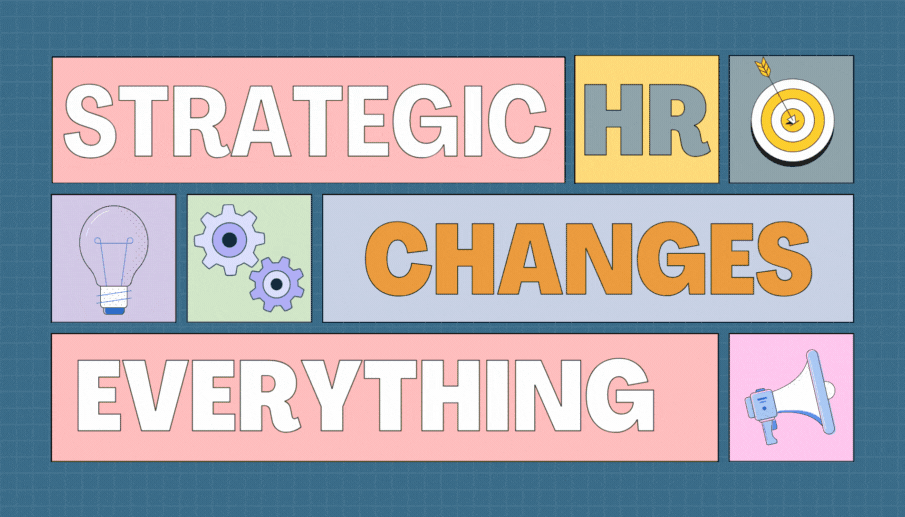
Strategic HR Changes Everything
Technology, demographics, and business models are evolving at breakneck speed. To stay ahead, we need to adapt just as quickly. Strategic HR can be your secret weapon for navigating these changing times.
Here’s the key: Strategic Workforce Management. It’s not just about managing employees; it’s about optimising your workforce for the future. With Strategic Workforce Management, organisations can leverage the latest advancements, address evolving demographics, and adapt business models to stay competitive.
Let’s dive right into the critical components of Strategic Workforce Management
1. Workforce Planning
Workforce planning is the foundation of strategic workforce management. This is where you analyse your current workforce capabilities, forecast future needs, and develop strategies to bridge gaps It’s all about having the right people with the right skills, right when you need them. This includes:
- Talent Gap Analysis: Identifying skills shortages or surpluses so you can fill the gaps and avoid wasting resources.
- Succession Planning: Ensuring a smooth leadership continuity.
- Scenario Planning: Thinking ahead and preparing for different future workforce possibilities, so you’re ready for whatever comes your way.
2. Talent Acquisition and Retention
It’s about building your dream team! Attracting and retaining top talent is crucial in today’s competitive job market. This involves developing a robust employer brand, offering competitive compensation packages, and creating a positive work environment to retain the employees you want for the long haul! Key strategies include:
- Employer Branding: Crafting a robust and attractive company image that attracts the best and brightest. Think of it as your company’s magnetic pull.
- Employee Value Proposition: Go beyond the job description. Clearly articulating what employees gain by working for the organisation – what makes working for you different and desirable?
- Retention Strategies: Don’t let your top talent walk out the door! Implementing programmes to enhance employee satisfaction and reduce turnover is essential.
3. Learning and Development
Continuous learning and development aren’t optional – they’re the fuel that keeps your team relevant and competitive in today’s dynamic job market. Strategic HR helps you invest in the right training programs to address current skill gaps and prepare employees for future challenges. Here’s how:
- Upskilling and Reskilling: Providing opportunities for your employees to learn new skills.
- Leadership Development: Don’t wait until it’s too late. Identify and nurture that top talent to foster the next generation of leaders.
- Continuous Learning Culture: Encourage a growth mindset where continuous learning is the norm. This keeps your team engaged, adaptable, and ready for challenges.
4. Performance Management
Effective performance management isn’t just about ticking boxes, it’s about aligning individual performance with your organisation’s goals. This involves setting clear expectations, providing regular feedback, and fostering a culture of accountability. Key elements include:
- Goal Setting: Setting clear and achievable goals that motivate employees and ensure everyone’s working towards the same objectives.
- Regular Feedback: Providing ongoing, constructive feedback to help employees improve and excel.
- Recognition and Rewards: Celebrate success! Acknowledging and rewarding high performance is key to keeping your team motivated and driven.
5. Workforce Analytics
Strategic HR is all about leveraging the power of data to make informed decisions. Workforce analytics equips you to gather and analyse valuable insights about your workforce trends, performance, and potential issues.
- Predictive Analytics: Using data to forecast future workforce needs and challenges.
- Employee Engagement Analysis: Measuring and improving employee satisfaction.
- Diversity and Inclusion Metrics: Tracking progress and identifying areas for improvement.
Let’s not forget about technology
Technology plays a pivotal role in strategic workforce management. HR technology solutions, such as Human Capital Management systems, learning management systems, and workforce analytics tools, enable organisations to streamline processes, enhance decision-making, and improve overall efficiency. These tools help HR professionals manage the entire employee lifecycle more effectively, from recruitment to retirement.
Embracing the Evolving Landscape: The Future of Work is Here
The future of work is already here, shaped by trends like remote work, the gig economy, and automation. It’s essential to adapt to these trends for an evolved workplace.
• Flexible Work Arrangements: Embracing and supporting remote and hybrid work models.
• Gig Workforce Management: Integrating freelance and contract workers into the workforce.
• Automation and AI: Leverage technology to enhance productivity, freeing up your team for more strategic tasks.





